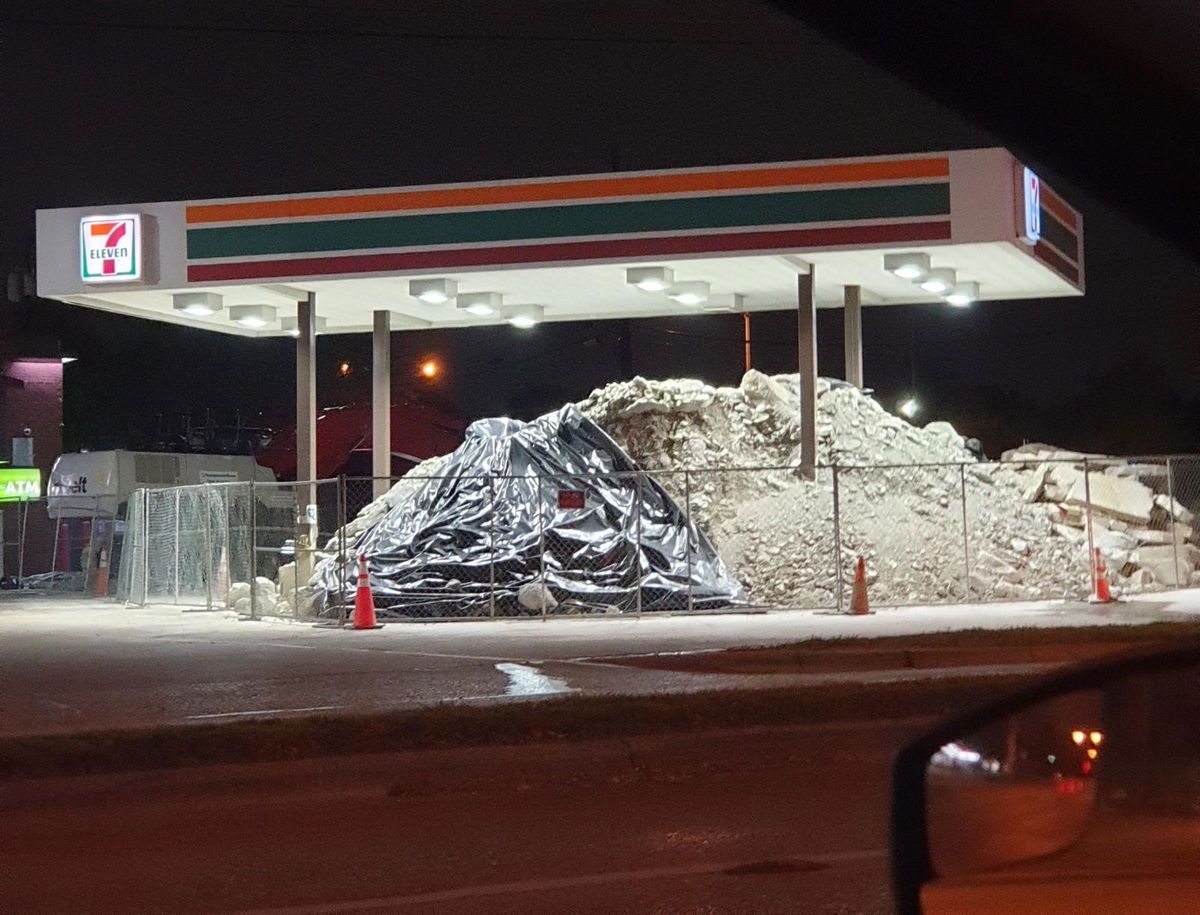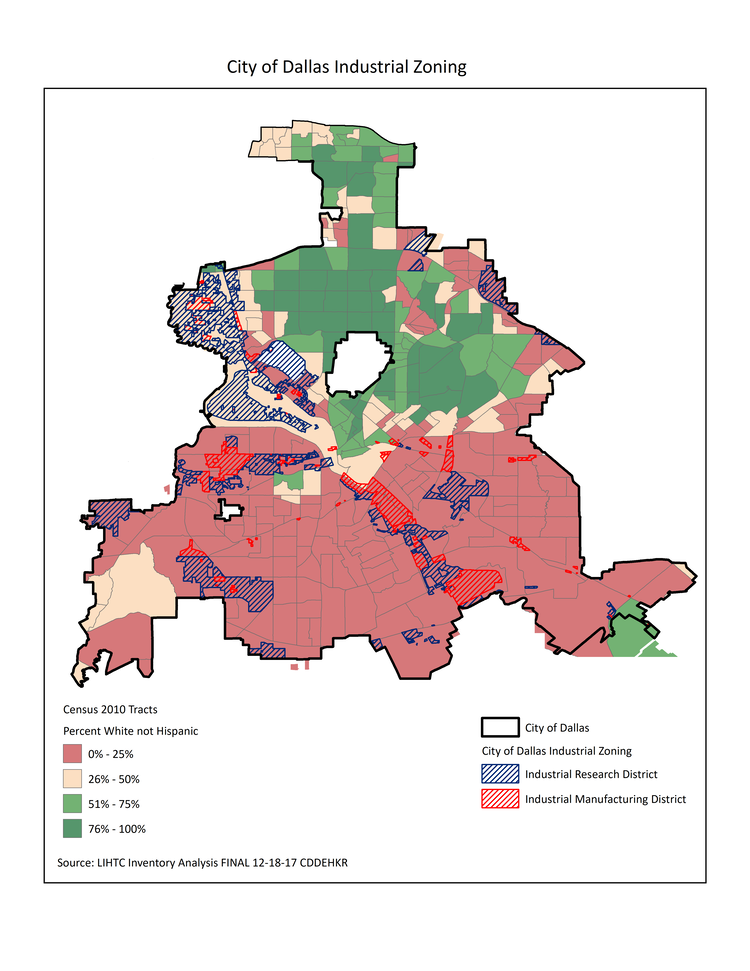Why is so much industry located near homes in West Dallas?
West Dallas was built around the jobs industries provided. The city approved large housing developments next to industrial plants because of a long history of environmental racism.
What specific pollution is of concern in West Dallas?
Historically, the RSR smelter poisoned West Dallas with lead. We have known lead is toxic for thousands of years, and there is no safe level of exposure. Lead can cause high blood pressure, kidney damage, and increased risk of miscarriage. In children, lead poisoning can permanently harm brain and nervous system development and cause behavioral problems.
GAF, a roofing materials plant on Singleton and Manila, is one of Dallas’ biggest emitters of sulfur dioxide. This chemical can cause acid rain and hurts lung function.
Many industrial plants in West Dallas emit fine particulate matter. Sometimes you can see it as dust or haze that can irritate your eyes, nose or throat. The smallest class of particles can travel deeply into your lungs and bloodstream to cause a range of health problems, depending on what the particles are made from.
Industrial plants are also noisy, smelly, and generally bad neighbors.

What is a batch plant?
A batch plant is a facility that mixes ingredients including rocks, coal ash, quartz dust and cement to make concrete. There are 38 in Dallas. Nearly one-fifth are in West Dallas.
How are batch plants harmful?
Batch plants release several pollutants into the air, including fine particulates and sulfur dioxide. The trucks that haul the concrete are also a source of emissions, in addition to being noisy and putting heavier wear on the roads. On average, a concrete batch plant has 10-20 trucks making 75 trips a day.
Batch plants are regulated to limit their production to only a certain amount of concrete per hour. However, some sites in Dallas have more than one batch plant in a small area, so their cumulative footprint is bigger. Significantly, batch plants tend to choose areas where the land is cheap and close to their project sites, so they accumulate in less wealthy neighborhoods around the city.
How can we get rid of polluters?
Individuals and governments can sue polluters who are breaking the law — whether by violating emission standards, not having the right permits, illegally dumping, or something else. The major barrier is having sufficient proof.
They can also have their federal or state operating permits denied if they’re violating their terms.
What entities are responsible for regulating concrete batch plants?
The U.S. Environmental Protection Agency oversees the Clean Air Act on a federal level. States can petition to have authority over their own Clean Air Act programs, such as issuing permits and monitoring emissions.
In Texas, the Texas Commission on Environmental Quality attained this authority. The TCEQ then delegated investigation and enforcement authority to the City of Dallas while retaining permitting authority.
Most batch plants in the city have a standard permit. When permits are up for renewal with TCEQ, there is a public comment period where anyone can register to speak and raise their concerns.
Outside of these renewal periods, City Council generally offers the most accessible platforms to oppose polluters. Additionally, anyone can report issues they have with batch plants in their neighborhood to the city’s customer service support center by dialing 3-1-1.
How is zoning significant to the West Dallas environmental justice movement?
A study by the Neighborhood Self Defense Project, a collaboration between the Inclusive Communities Project and Downwinders at Risk with the support of Southern Sector Rising, found that a quarter of the land zoned for industrial research in West Dallas is vacant, and 21% of it is occupied by single-family homes. Similarly, 10% of the land zoned for industrial manufacturing is vacant, and 2% of it is occupied by single-family homes. Even though people are now living on this land, it remains a target for industrialization.

The city has an authorized hearing process that allows the public to participate in rezoning. Historically, if the zoning of an industrial area changes, the existing facility is given several years to recoup its investment before moving out of the area.
So, West Dallas residents have to organize in ways that are both proactive about keeping new industry away and reactive in finding ways to oust longtime polluters.
What is a Specific Use Permit (SUP)?
Businesses apply for a SUP when they want to use land for something that is not already allowed in a particular zoning area. They apply for a permit so the city can review the request to determine if it’s reasonable. This includes making sure the potential land uses are not dangerous to people and the use doesn’t disrupt what else is nearby.
The City Plan Commission and City Council process SUPs, creating opportunities for public comment.
From Dallas Free Press’ analysis of the City of Dallas zoning database, at least eight batch plants in Dallas have a SUP expiring in the next three years. Several will automatically renew unless owners of at least 20 percent of the land within 200 feet of the facility file a written protest. The Director of the Department of Development Services forwards protests to the City Plan Commission and City Council.
Sourcing & Methodology Statement:
Why did we do this story?
Environmental justice is a top priority of West Dallas 1, a grassroots organization that umbrellas West Dallas neighborhood associations. This story looks at the present-day situation and, paired with a timeline of industrial racism in West Dallas, acts as a table setter for the city and state policies neighbors are pushing to change.
Who did we interview?
For this piece, we didn't interview but gathered and sourced information from environmental experts, state and local authorities, and local organizations focused on environmental reform, such as the Dallas Environmental Commission, the Neighborhood Self-Defense Project, and the law firm Daniel & Beshara, which represented West Dallas residents in the historic Walker v. HUD public housing desegregation case.
Citations & References:
"Occupational Health Surveillance," Texas Health and Human Services
"History of Lead Poisoning in the World," Dr. Herbert L. Needleman, 1999
"Lead Poisoning," World Health Organization, Aug. 31, 2022
"Singleton Corridor Neighborhood-Led Plan," Neighborhood Self-Defense Project, Nov. 17, 2021
"Point Source Emissions Center," Texas Commission on Environmental Quality
"Concrete Batch Plants," Texas Aggregates and Concrete Association
"TCEQ Permitting for Concrete Batch Plants," Kathryn Bazan, Dallas Environmental Commission chairwoman, March 2022
"Unequal Industrial Zoning," Daniel & Beshara, Dec. 18, 2017

Leave a Reply